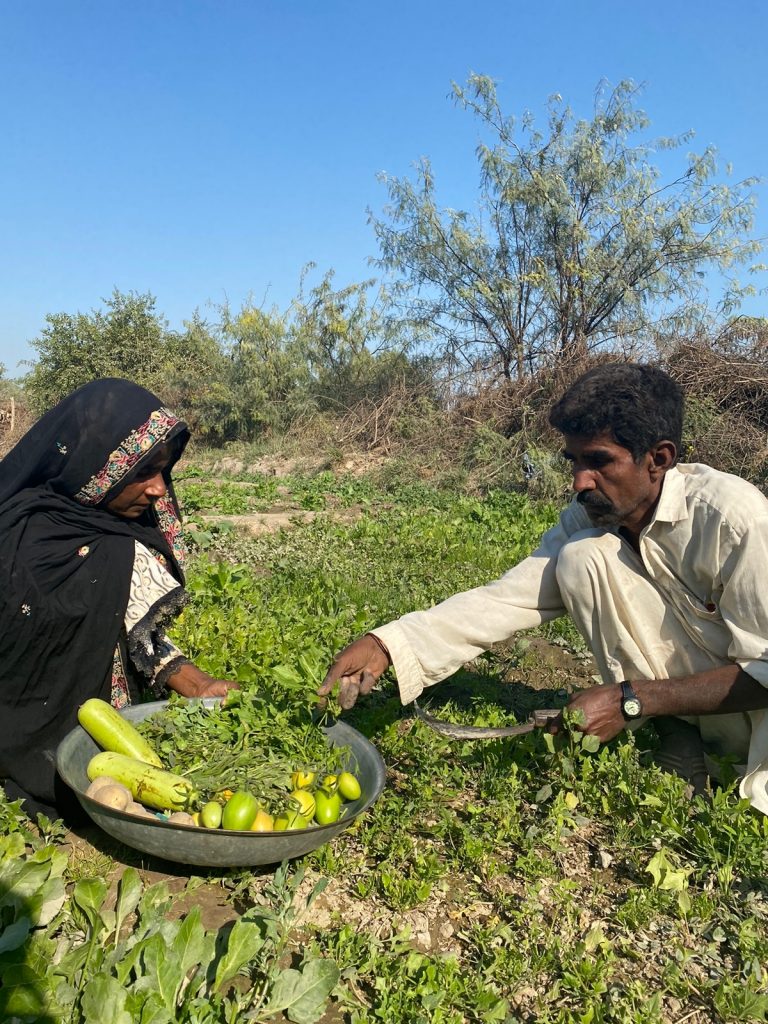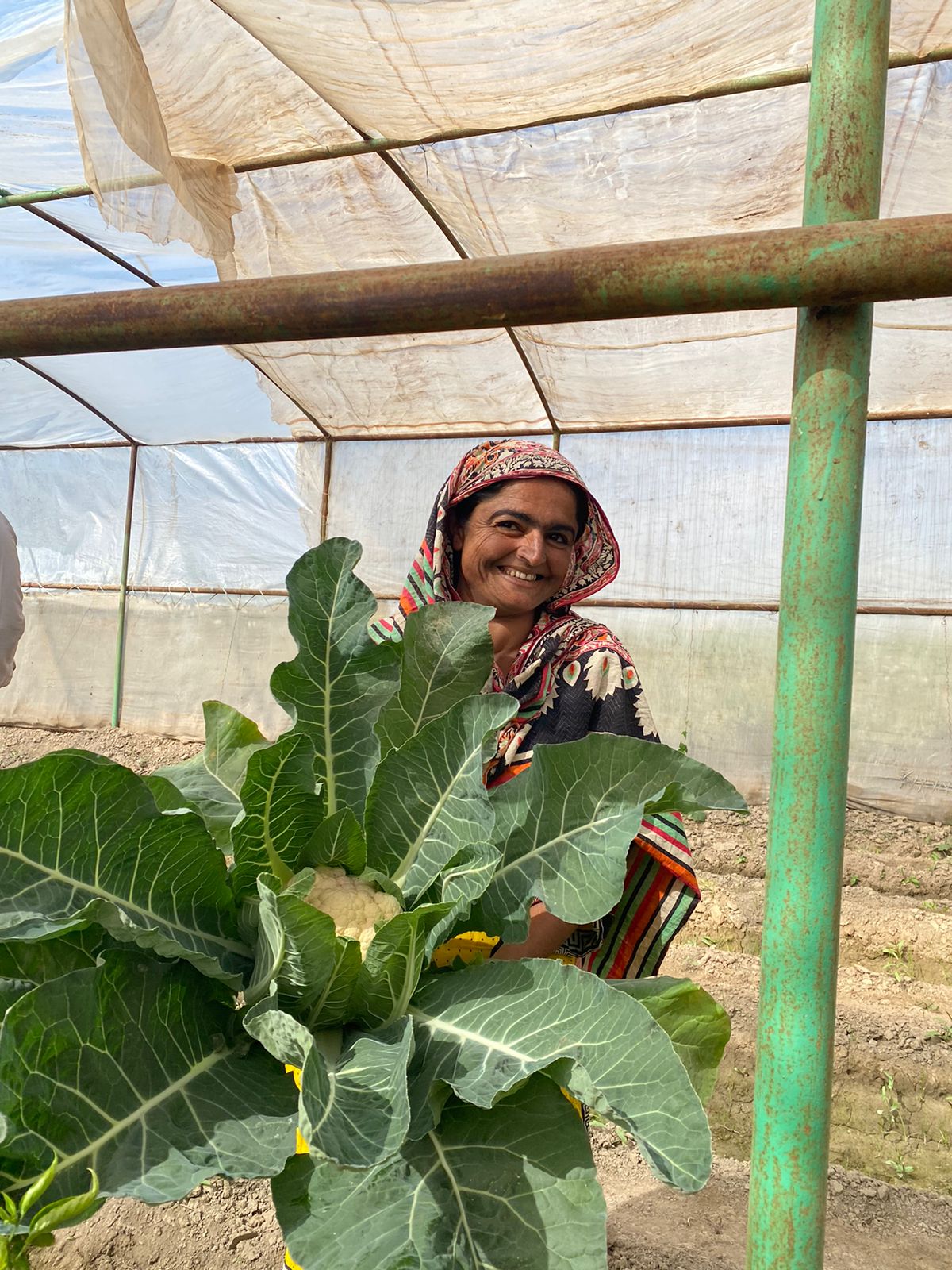
Due to requirement of land ownership certificate, most small farmers couldn’t benefit from post-flood package of Rs.5000 per acre
Munawar Alee Kapri
In Pakistan, numerous significant issues remain unrecognized due to a lack of public discourse, and the never ending political turmoil in the country. These issues are often discussed only in hotel workshops or the occasional Twitter threads. Despite the efforts underway to address them, these issues receive less attention as they are legitimate problems that cannot be easily exploited for political gain. This behavior undermines the effectiveness of the efforts underway.
Malnutrition issue is more severe in Sindh than in other parts of Pakistan
Malnutrition is one such issue that afflicts the common Pakistani man. Even though it has been highlighted by the government and the media, there is very little public awareness on the matter. Very few people know that in 2016, the Sindh government developed a comprehensive multi-sector plan called the Accelerated Action Plan (AAP) to address malnutrition in the province, because this issue is more severe in Sindh than in other parts of Pakistan. Stunting affects 45% of children under the age of five, while 19% are wasted, and 9% are severely wasted, compared to national averages of 38%, 17%, and 7%, respectively. This has direct consequences for the future of the labor force of the province. One of the major stakeholders supporting the AAP is the EU-supported PINS nutrition-sensitive component, which has been implemented in ten districts of Sindh since 2018 with a focus on water, sanitation, hygiene, agriculture, livelihoods, and food security.
As a part of the PINS project for the last 5 years, I have gained detailed insight into the on the ground realities and issues faced by the people of Sindh. In this article I would like to present my reflections on the issues pertaining to agriculture and the small farmers that partake in agricultural activities and their role in the context of malnutrition. Given the critical importance of these farmers, I believe that it is important for the lessons learn within PINS 3 to be assimilated within wider stakeholders. The program has successfully collaborated with over 40,000 small farmers owning land from 1- 5 acres in ten districts of Sindh (Dadu, Jamshoro, Matiari, Tando Muhammad Khan, Tando Allahyar, Sujawal, Thatta, Larkana, Qambar Shahdadkot and Shikarpur).
Small farmers inherit land from their forefathers and they don’t know land transfer process
The biggest issue faced by these small farmers is that they lack documentation of land ownership, which is largely due to their poverty and illiteracy. They typically inherit the land from their forefathers but lack knowledge of the land transfer process, making them more vulnerable to exploitation. One recent example of this is that while the Sindh government offered a post-flood package of PKR 5000 per acre for the farmers, however the requirement for a certificate of land ownership (7th form) excludes most small farmers from benefitting from this scheme. Given that there is a gap within the legal system, it is essential to consider alternative models that can be used to reach these farmers. One such existing model is that of the community institutions established by different development Programs in these villages. These institutions empower villagers on various levels and allow external parties a cohesive space where they can easily reach out to these farmers and provide them with timely support. If these alternative models aren’t given the recognition and importance that they deserve, the small farmers will continue to be the most vulnerable and neglected segments of the rural communities.

Small farmers’ lack of knowledge about improved agricultural practices, leave them at the mercy of pesticide companies and fertilizer dealers
Another challenge faced by small farmers is their lack of knowledge around improved agricultural practices, leaving them at the mercy of pesticide companies and fertilizer dealers who exploit them. During a round of focus group discussions with farmers in Thatta, it was revealed that the only technical person who visits them is a representative of a pesticide company. This is due to the remoteness of these areas that often causes them to be sidelined by government bodies. Given the high incentives offered to sales representatives, it is no surprise that such companies are flourishing business everywhere in Sindh. These sales representatives offer solutions that are both ineffective and inauthentic but due to limited options, these farmers are left with no other choice. One way to tackle the issues of remote areas getting little to no attention is to offer digital extension services, which have been tested on a small scale in PINS. These extension services aim to extending support to these communities by providing them support via GPS based data through their mobile devices. However, during the pilot of these services, we realized that there are many limitations, such as low literacy rates, lack of smart devices, and poor internet connection. Alternatively, in order to support these small farmers, the government should provide them with free soil testing services, so they can use fertilizers according to their soil requirements. This will help them not rely on different fertilizers as a standard package, and reduce their costs. Additionally, the government should act against companies/individuals who sell sub-standard or unauthentic pesticides in their districts through ACs and DCs.
A lack of awareness pertaining to disease and other factors affecting crops within the farmers is another issue. It is understandable that the government has limited human and capital resources. However, there are options like engaging with the district agriculture officers and asking them to report on crop diseases in their respective areas and provide solutions. These solutions can be aired seasonally through local media to increase farmers’ awareness. Nowadays, FM stations are common in each district, and programs can be aired to encourage improved practices (i.e. improved seed varieties as per season, type of land and required fertilizer, water frequency and storage methods) from the start to the end of the cropping process.
Soil infertility due to salinity is a significant problem in the lower Indus basin, and it disproportionately affects small farmers
Another major challenge in PINS districts witnessed is the issue of soil infertility, primarily caused by salinity. This is a significant problem in the lower Indus basin, and it disproportionately affects small farmers who due to this issue suffer from food insecurity and financial losses. Bio saline agriculture practices offer a potential solution, and based on the experience gained from PINS, some areas in Thatta and Sujawal where traditional agriculture is not viable now due to high soil salinity, these areas can be suitable for implementing such practices.
The issues faced by small farmers are a mix of geographical and economic issues that need to be studied holistically
The issues faced by these small farmers are a mix of geographical and economic issues that need to be studied holistically. The PINS program has worked with these farmers for over five years and understands that their livelihoods are entirely dependent on agriculture. One major observation is that, given the problems mentioned above, a large chunk has been forced to migrate to densely-populated urban areas where they lack the necessary skills to earn a decent living. This is an alarming observation and the reason why it is important to understand and overcome the challenges faced by the small farmers (such as water scarcity, lack of land reforms, and limited access to technology) is because of the significance of their existence in terms of food security and economic well-being in the province of Sindh. Given the context of malnutrition given in the beginning of this article, the issue of food security is one that majorly threatens the development of this province.
It’s important to note that Sindh is the only province in Pakistan where the urban population now exceeds 50%, and their food requirements primarily come from rural areas. Large landowners tend to grow cash crops, unlike small farmers who have limited land and focus on crops that provide both food security and daily income, such as vegetables and fodder. Although small farmers have small landholdings, their numbers are significant and they have a considerable impact on rural areas. Given the key role they play in maintaining the food security of the province, it is important to extend the right kind of support to this segment of society so that they can play their role in addressing larger problems such as malnutrition.
_____________
About the Author
Munawar Alee Kapri is the Monitoring and Evaluation Coordinator for the EU-funded PINS program in Sindh, which addresses malnutrition by working with the local community, including small farmers. As a part of his work, he had the opportunity to interact with small farmers and record some valuable lessons based on their interactions.
Please carry on this good work of bringing up common issues